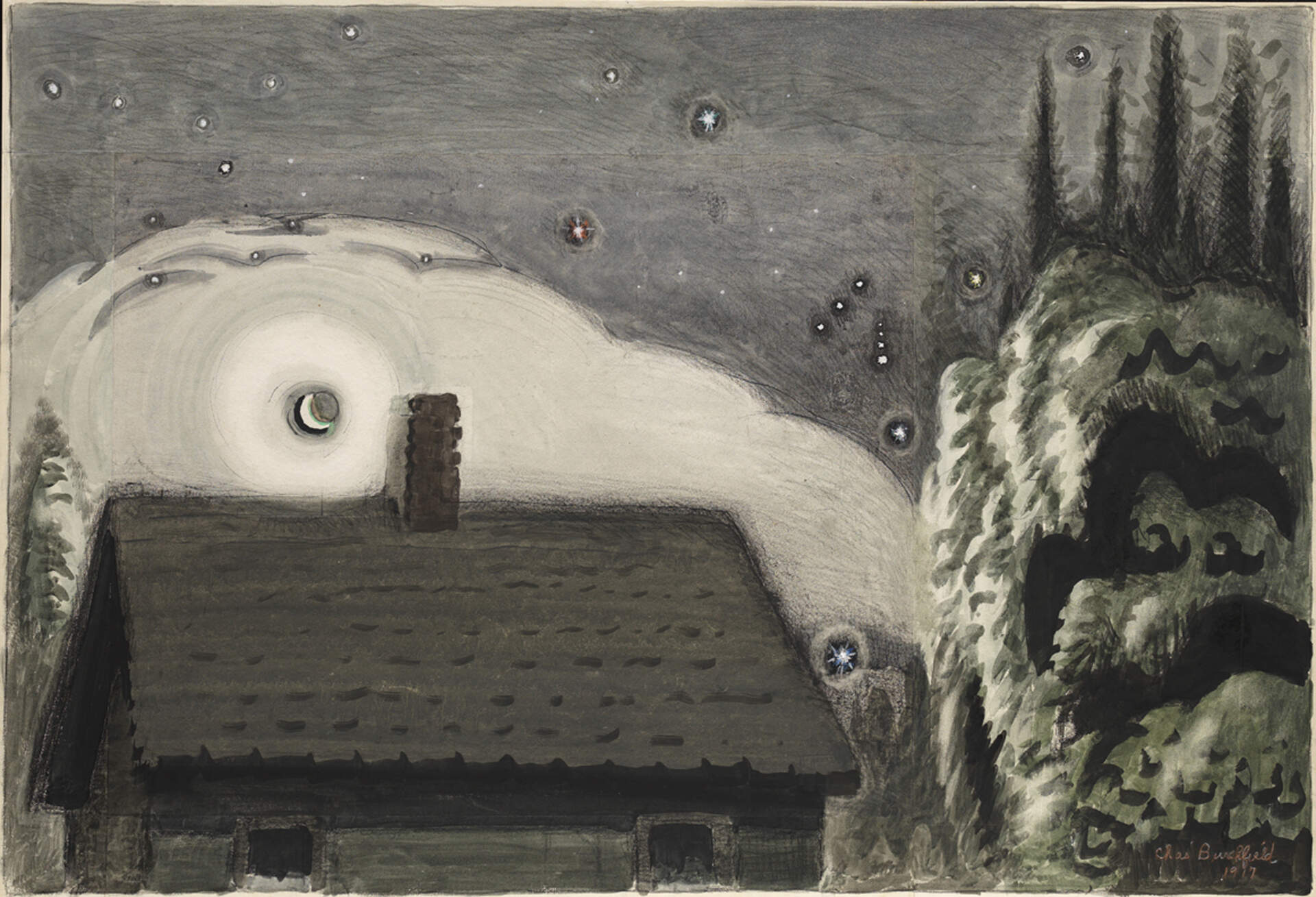Charles E. Burchfield (1893-1967)Orion and the Moon
1917
Watercolor, charcoal, colored pencil, and gouache on joined paper, mounted on board
23 1/2 x 35 inches
Private Collection
Orion and the Moon is an extraordinary work from what Burchfield called his Golden Year. The painting contains his neighbor’s house in Salem, Ohio dwarfed by a cloudy, silver expanse of sky. A crescent moon and Orion are situated next to a mass of densely planted trees. Orion appears in later masterworks such as Orion in December (1959) and Orion in Winter (1962); but Orion and the Moon was the first major work to celebrate his favorite constellation.
The star that makes up Orion’s right shoulder is depicted with a distinct red hue. This star, called Betelgeuse or Alpha Orionis, is a red supergiant and one of the largest and brightest stars in the visible night sky. Bellatrix, the blue giant at Orion’s left shoulder, appears blue in the sky as well as in the painting. Interestingly, Rigel, the star forming Orion’s left knee, is a blue-white giant, and should have appeared brighter to Burchfield. Rigel is not blue in Orion and the Moon. Burchfield likely knew that a star’s color is indicative of its temperature. A red star, such as Betelgeuse (3,200ºC), is cooler than our Sun (5,600ºC), whereas Rigel (11,860ºC) is hotter than the Sun. Bellatrix (21,230ºC) is even hotter.
Orion, the son of Poseidon, appears with his sword, belt, club and lion’s skin in the sky. As with many constellations, Orion can also be depicted in other ways. Instead of holding a lion’s skin in his left arm, he is sometimes thought of as holding a bow or a shield. Orion can also be seen by people at all latitudes. The stars were seen as the pattern of a man by cultures around the world from the Americas to Europe to Africa to Asia. In New York, the Iroquois Confederacy defines the constellation as the “Carrier of the Summer Sun.” On the first day of summer, when it is at its highest in the sky, the Sun is located right above Orion, as if he were holding it above his head. A number of star patterns, such as the Pleiades, the Big Dipper and Gemini, repeatedly appeared in Burchfield’s work, but none so often as the great hunter Orion.
- From the exhibition Charles E. Burchfield: Oh My Heavens
